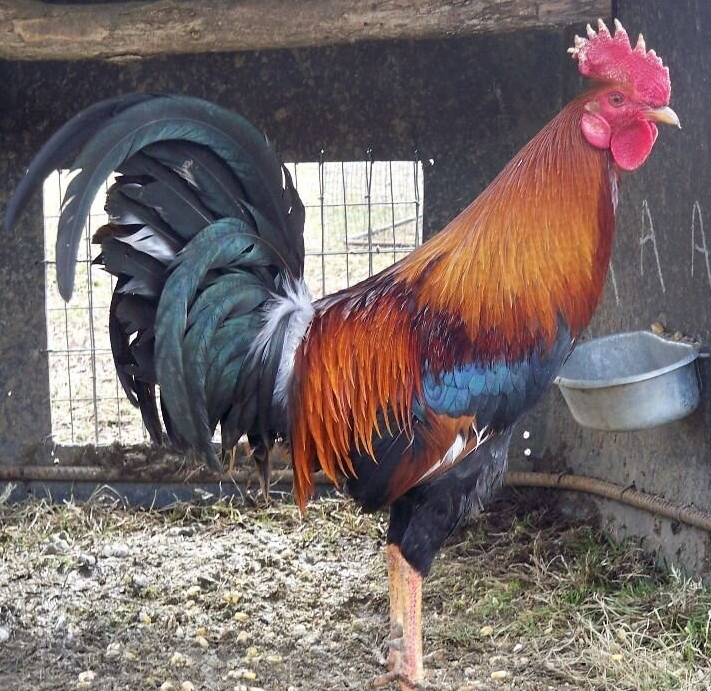Step into the gamefowl world, where history, passion, and fierce competition collide. Join us as we explore the fascinating origins and characteristics of radio gamefowl, a breed of roosters that has captivated generations with its beauty and fighting style. From the bloodlines that shaped them to their signature techniques in the ring, get ready for an inside look at what makes these birds truly remarkable.
Radio Rooster Behavior and Characteristics
Before we get into their history and origin, there are a few things to know about radio gamefowl behavior and characteristics. For one, these chickens are known to be very aggressive and territorial. They often attack other animals, including chickens, if they feel threatened or think their territory is being invaded. This can make it challenging to keep them as pets, but many people still enjoy having them around because of their unique personality traits.
Radio Gamefowls is also known for being very active and playful. They love to run and explore and are always up for a good game of chicken chase. This high activity level can be exhausting for some people, but it’s all part of the fun for others. These birds are also known to be quite vocal, making loud noises when they’re excited or when they feel threatened.

All of these behaviors and characteristics come together to create a chicken that is both unique and interesting. Radio gamefowl has a long history and origin steeped in tradition and folklore. They are also a popular choice for fighting cocks, due to their aggressive nature and high level of activity. Whether you’re looking for a pet chicken or a fighting cock, radio gamefowl is an excellent choice.
Radio Gamefowl History and Origin
The term “radio gamefowl” describes several different types of fighting birds. The term is derived from the fact that these birds were once used in illegal cockfighting operations broadcast over the radio.
Today, radio gamefowl are still used for cockfighting but are also bred and kept as pets. Some of the most popular breeds include the Red junglefowl, White-faced black Spanish, and Green junglefowl.
Radio Gamefowl has a long and exciting history. They are believed to have originated in Asia, where they were used in cockfights for centuries. In the 1800s, British soldiers stationed in India brought radio gamefowl back to England, where they quickly became popular among the upper class.
Cockfighting was soon banned in England, but it remained popular in other parts of Europe and Asia. In the early 1900s, radio gamefowl began to be imported into the United States, where they were used in illegal cockfights.
Radio gamefowls are typically aggressive birds with strong fighting instincts. They are often bred for specific traits that make them good fighters, such as a high pain tolerance or quick reflexes.
The basic Radio bloodline was 1/2 Whitehackle (the noisy rooster), and 1/2 Murphy crossed to 1 Kelso hen, then the offspring were bred back to 7/8 of the cock.
It is natural for people to ask me, “You came up with the radios?” I replied, “I came up with this one rooster, and I bred him to one Kelso hen, and that’s how I…and I still have that family today. It is a red chicken with yellow legs called Radios.
When raised correctly, radio gamefowl can make good pets. They are usually docile birds that enjoy human interaction. However, their aggressive nature means they should not be kept with other animals unless supervised by an experienced owner.
Radio Gamefowl Fighting Style
It is often their advantage, as well as their death knell, that radios are so aggressive. According to Johnny Jumper, radios are not very smart fighters because they have one goal: to kill, win or lose. The opponent will die instantly if they lunge into the knife, but radios are more likely to get the first hit because of their sheer aggression.
Radios today are a bit slower than modern gamefowl, so breeding them with a brilliant and speedy bloodline might improve their chances in the pit.
Whitehackle and Kelso hybrid, the Radio tends to cut too much. After fighting in the pit, they either come out badly injured due to too much shuffling or alive because Radios can quickly defeat unwary offbeat gamefowl. Having a medium-high station, Radios can break high with their mortal slash, but once their opponent is down, they are too fast with their multi-shuffling hits on top of their enemies.
It is recommended to cross with either the Kelso or the Sweater, the first for its sidestepping fighting smarts and the latter for better power and gameness, as the Sweater is known for swarming. It is common for radios to peck your hand if they are nervous or suspicious of their handler.
See Also:
- Roundhead Gamefowl Bloodlines History and Fighting Style
- Gamefowl Supplies List for Cockfighting Enthusiasts
- Albany Gamefowl Characteristics, Origin, and Fighting Style
- Toppy Gamefowl – Origin, Characteristics, Fighting Style, and More
- Shuffler Gamefowl Bloodline Profile and Fighting Style
